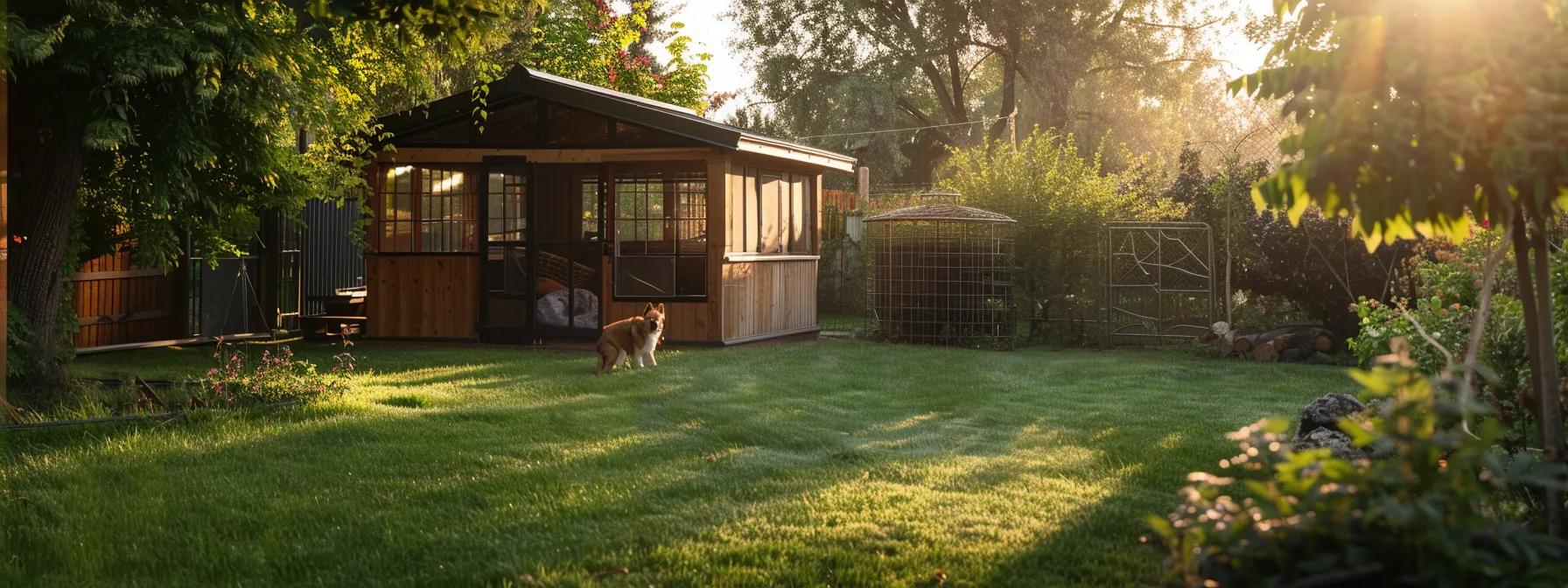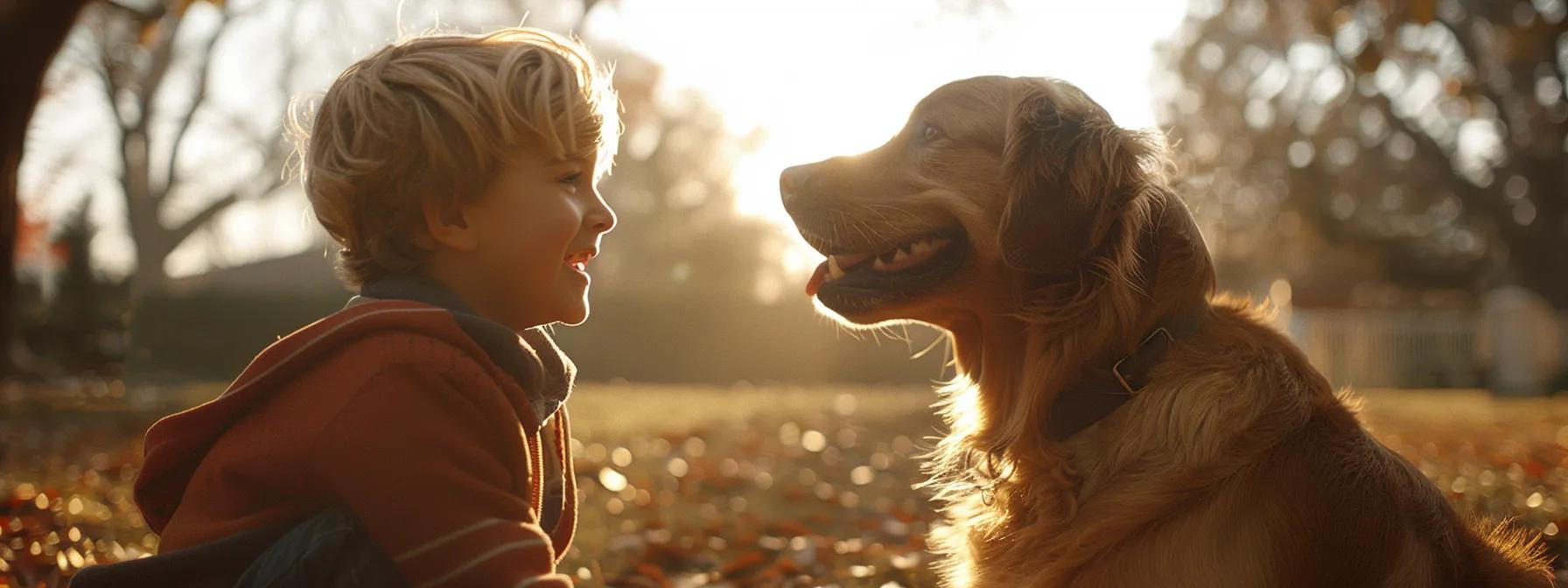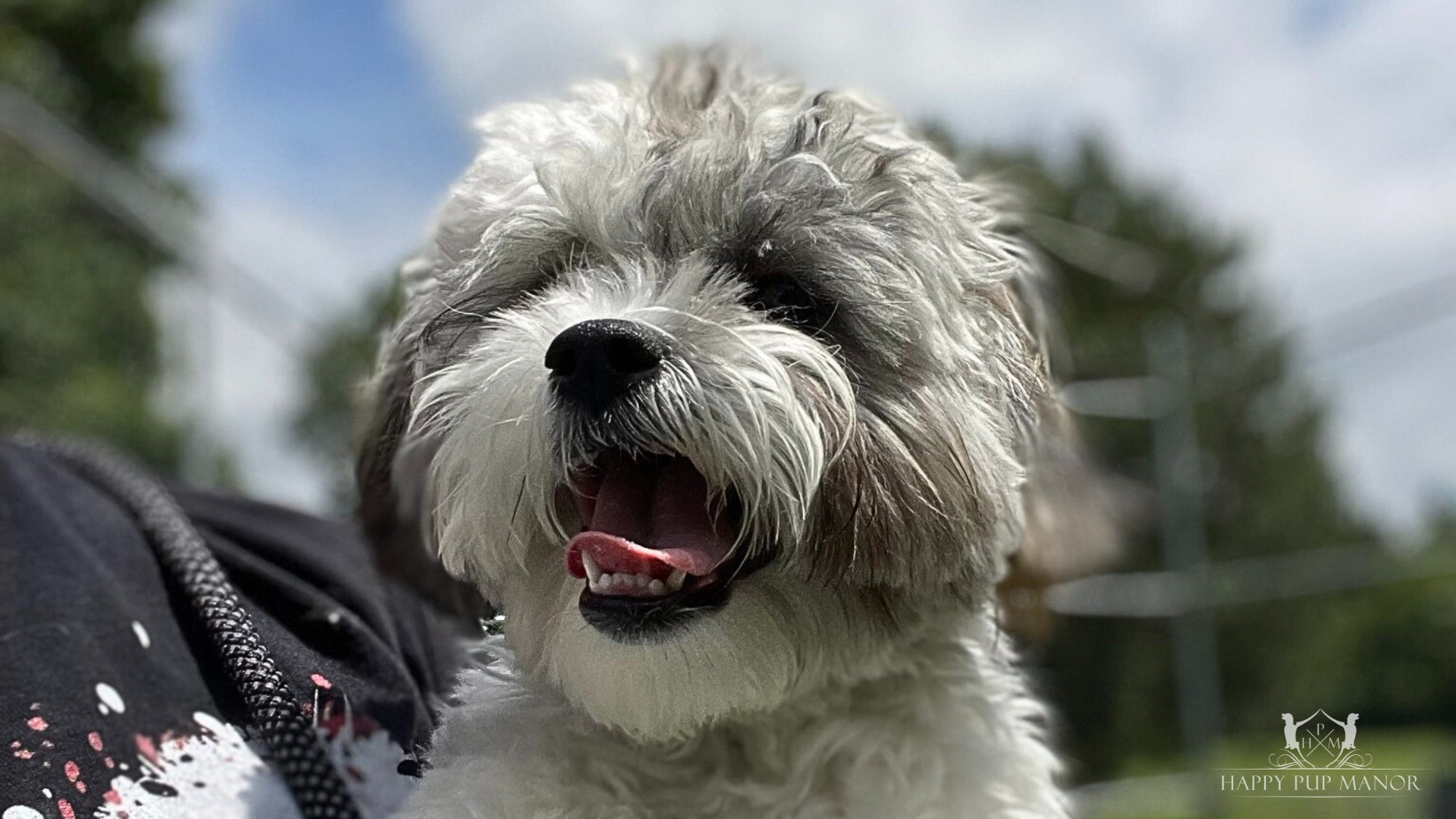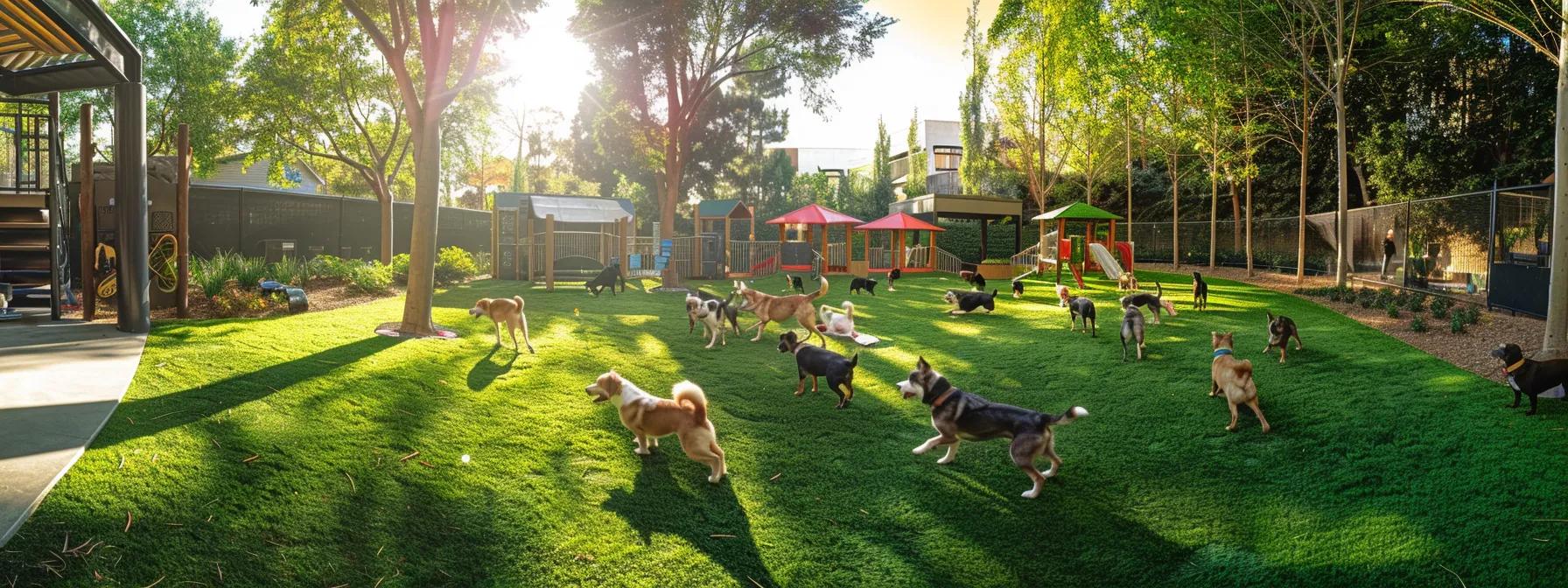Tips on Effectively Introducing Your New Pup To Your Home

Tips on Effectively Introducing Your New Pup To Your Home
Getting a new pup is a great adventure! Introducing him to your home is one of the first adventures you and your pup will embark on. This is an important part of building a strong bond with your puppy, so ensuring you are ready for this adventure is crucial in ensuring your pup will be comfortable in your home.
Prepping your home and making sure that it is safe for your puppy is the first step. You may have other pets or children at home, which can be challenging for them and your new puppy, so everyone won’t have a hard time with the changes. As a puppy owner, you need to have patience and careful planning to make this a wonderful and positive experience for you and your pup.
Happy Pup Manor prepared this step-by-step guide on what you need to prepare your home and gradually introduce your new pup to their new environment. Let’s jump in!
Step 1: Preparing Your Home
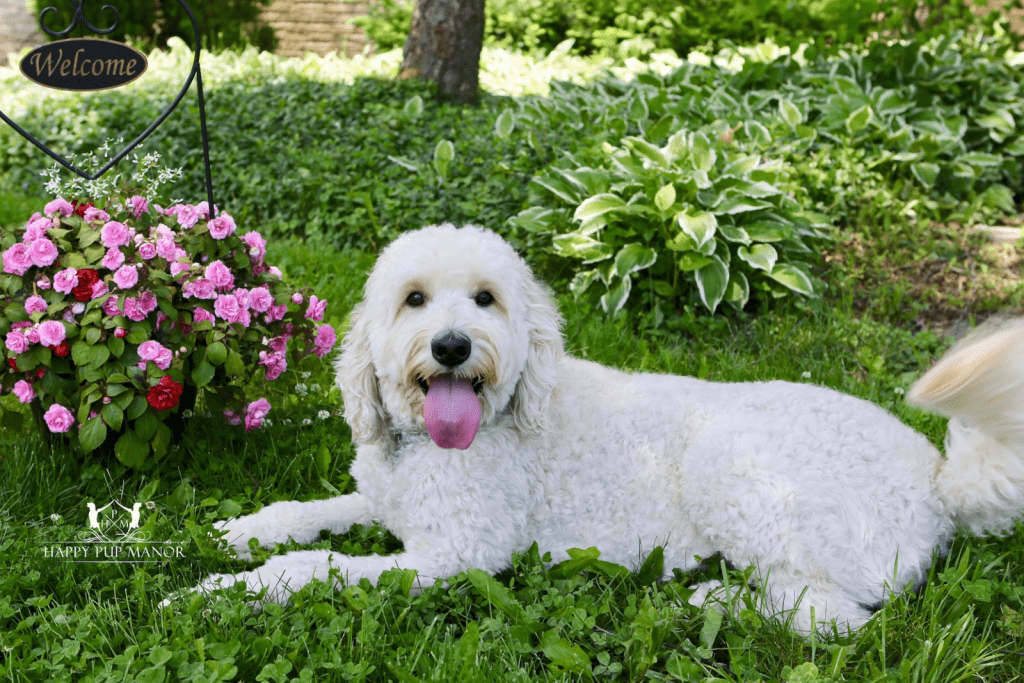
Before you bring your new dog home, you should perform a complete walkthrough of every room in your house. This will help you identify and remove any potential hazards or items that could be damaged by the dog. Below are some specific actions you can take in each room to ensure a safe and comfortable environment for your new furry friend.
- Living Room – Remove any fragile items from low shelves or tables, secure any loose cables or cords, and relocate any houseplants your dog may be able to reach. Some plants can be lethal to dogs if ingested, so keep them in high places they can’t reach.
- Kitchen – Store cleaning supplies, chemicals, and detergents in securely closed cabinets. Trash cans should have lids that cannot be easily opened, and food items should be kept out of the dog’s reach.
- Bathroom – It’s important to keep medications, toiletries, and cleaning products in locked cabinets or high shelves and close the toilet lid.
- Bedroom – Ensure small objects are out of reach and laundry baskets are inaccessible. If the dog will sleep with you, consider using a washable bed cover. Also, keep the door to your bedroom closed so objects like lamps and books won’t accidentally fall on your dog.
- Outdoor Areas – Secure the fencing, remove toxic plants or chemicals, and store gardening tools in a locked shed or garage. Don’t let your dog go outside unattended until your dog has taken obedience training, as he might ingest plants and objects.
Step 2: Set Up Your Puppy Area

Creating a specific room as a designated area for your new dog and using a crate is recommended. This gives them more space to move around and feel comfortable, especially when your pup might feel overwhelmed. Here’s how you can set up the designated area:
- Choose a Room – To ensure your dog’s comfort, choose a spacious room in your home that can accommodate its bed, food, water bowls, toys, and other necessary supplies. Ideally, this room should have a door or a gate that can be closed to separate it from the rest of the house.
- Remove Hazards – Before letting your dog in, it is important to remove any potential hazards or fragile items from the room. This includes toxic plants, chemicals, and small objects they might swallow.
- Furnish the Room -To make your furry friend feel more comfortable at home, designate a specific corner of the room where they can relax and sleep on a comfortable bed or blanket. Place their food and water bowls in another area that is easily accessible but not in the way of foot traffic. Additionally, provide a few toys to keep them entertained and mentally stimulated.
- Create a Comforting Atmosphere – If your dog spends time in the room at night, Consider adding soft lighting, a nightlight, or playing soothing music. This can help alleviate any anxiety they may have.
- Introduce Your Dog – To introduce your dog to a new area, take them to the designated spot and use positive reinforcement, like treats or praise, to encourage them to explore. Give them the time they need to familiarize themselves with the surroundings, allowing them to sniff around and adjust to their new space at their own pace. Remember to be patient and understanding during this process, as it may take some time for your dog to feel comfortable in their new environment.
Step 3: Gather Necessary Supplies
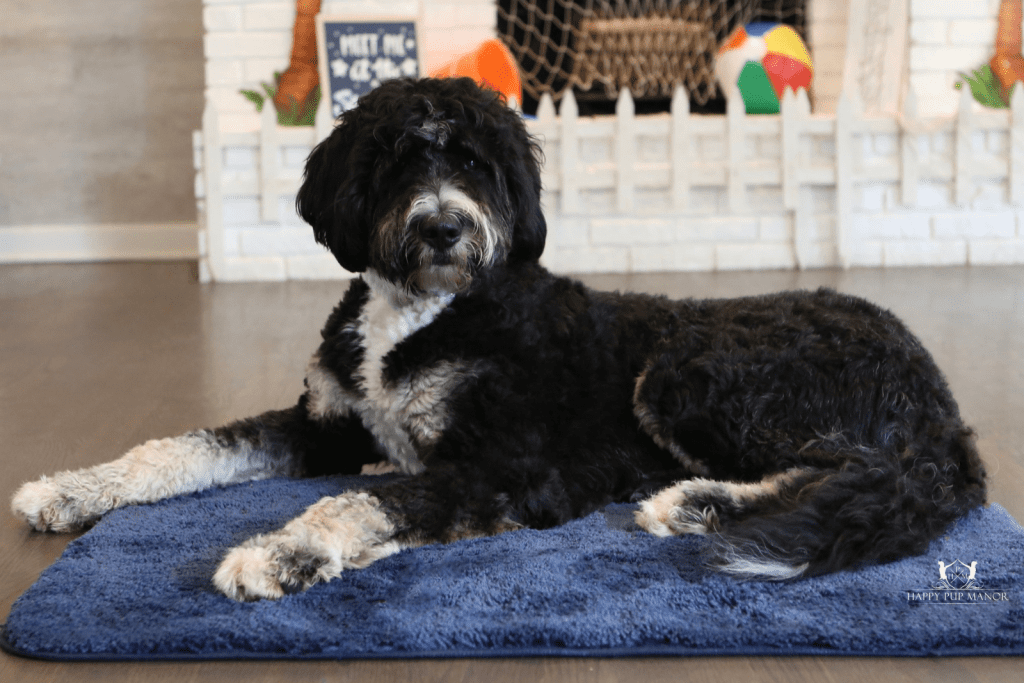
Before bringing your new puppy home, gather the necessary supplies that you will need to ensure that he will be comfortable and that you are prepared for everything. Here’s a list of essential supplies you should have:
- High-Quality Puppy Food – Purchase puppy food appropriate for your dog’s age, size, and breed. Consult with a veterinarian to determine the best dog food that can provide your puppy with all the nutrients it needs.
- Food & Water Bowls – Get doggie bowls that are sturdy and safe for your puppy to use. Ceramic or metal dog bowls with a stable base to keep them in place when your dog eats are the best options since they are hygienic and easy to clean.
- Toys – It is important to choose toys that are safe and suitable for your dog’s size and chewing habits. Provide a variety of interactive toys, chew toys, and comfort toys to keep your dog mentally and physically stimulated.
- Dog Bed – Select a comfortable bed that is appropriately sized for your dog to rest and sleep in. Consider their size, sleeping style, and any specific needs they may have.
- Collar or Harness and Leash – Purchase a collar, harness, and leash for walking and identification purposes. Ensure they fit properly and comfortably. Slip leashes are great for untrained new puppies since they are easy to put on. You can also get a short leash to keep your puppy closer to you when taking outdoor walks.
- Grooming Supplies – While you can always bring your dog to a professional groomer, you should still have grooming supplies at home to ensure your pup is clean. Acquire basic grooming supplies like a brush or comb suited for your dog’s coat type, dog-friendly shampoo, nail clippers, toothbrushes, and wet wipes.
- Cleaning Supplies – Accidents are bound to happen when you have a new puppy. To handle any messes, make sure to purchase appropriate cleaning supplies, including pet stain removers, odor neutralizers, and pet-friendly disinfectants.
- Pet Gate or Exercise Pen – Consider getting a pet gate or an exercise pen for your dog. This will help create a safe and enclosed area for your furry friend, especially during the initial adjustment period. It can also come in handy when you have visitors, as your puppy may get too excited or anxious.
Step 4: Gradual Introduction to Your Home
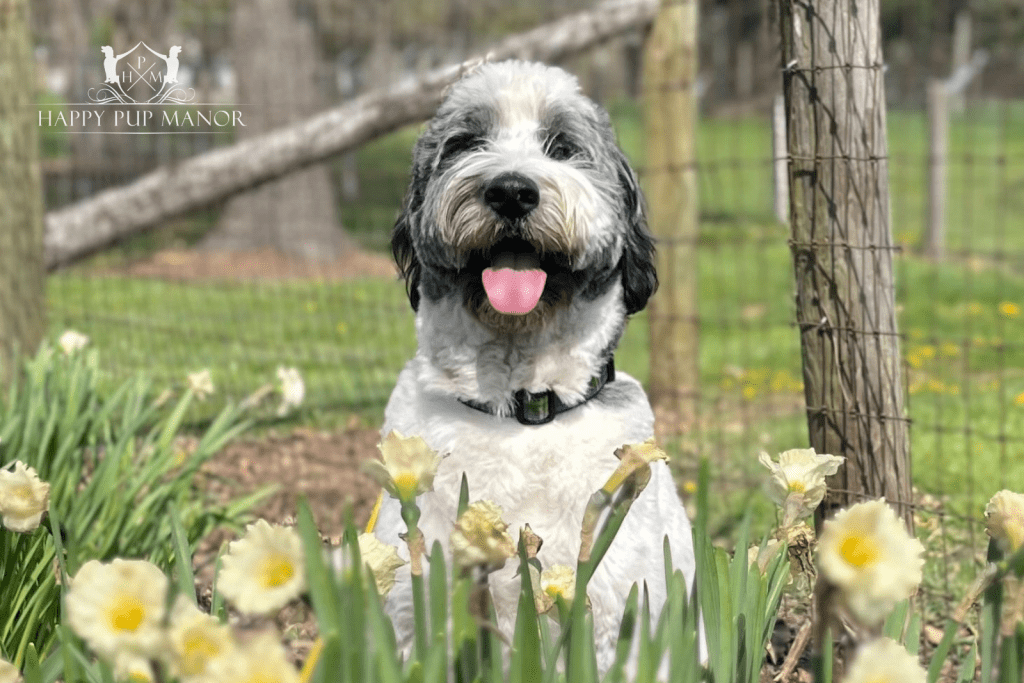
Now that you have prepared your home and gathered all the necessary items for your new puppy, it is time to introduce him to his new surroundings. To ensure a smooth transition for your new dog, it is best to gradually introduce him to your home. This approach will prevent your pup from getting overwhelmed and becoming wary of his new environment. Follow these steps for a gradual introduction:
Introduce Your Puppy
Introducing your dog to their new home should be done calmly and gradually to help them feel comfortable and secure. Using a leash can provide you with control and help guide your dog as they explore their new surroundings. Allow them to sniff around and investigate the area at their own pace without rushing or overwhelming them.
Providing space and allowing them to acclimate slowly can help ease any anxiety or uncertainty they may feel about their new environment. Be patient and supportive as your dog adjusts to their new home, and offer plenty of reassurance and positive reinforcement along the way.
Supervise and Observe
Pay close attention to your dog’s behavior and body language while it explores its new surroundings so you can understand its comfort level and emotional state. Look for signs of relaxation, such as a wagging tail, loose body posture, and curious exploration, which indicate that your dog feels comfortable and at ease.
On the other hand, watch for signs of stress or anxiety, such as panting, trembling, pacing, or avoiding certain areas, which may indicate your dog is feeling overwhelmed or unsettled. By closely observing your dog’s behavior, you can tailor your approach to help them feel more secure and comfortable in their new home. If you notice any signs of stress or discomfort, consider giving your dog some space and time to adjust gradually and offer reassurance and support as needed.
Gradually Introduce the Rest of the Home
Once your dog appears relaxed and comfortable in the initial area, gradually introduce them to other parts of the home. Open doors or gates to allow access to additional areas, but do so gradually to prevent overwhelming them. Supervise their exploration closely to ensure they remain calm and comfortable.
If your dog shows signs of stress or anxiety, such as pacing or trembling, consider slowing down the introduction process and giving it more time to adjust. Remember to provide plenty of positive reinforcement and support as your dog explores its new environment, and be patient as it acclimates to its new surroundings.
Encourage Positive Experiences

Positive reinforcement is a powerful tool for helping your dog feel comfortable and confident in their new home. Use treats, praise, or gentle petting to reward your dog for good behavior, such as exploring calmly, responding to cues, or showing signs of relaxation. By associating positive experiences with their new environment, your dog will begin to feel more at ease and form positive associations with their new home.
This can help reduce stress and anxiety, promote bonding, and facilitate a smoother transition to their new surroundings. Remember to be patient, consistent, and supportive as your dog adjusts, and celebrate their progress along the way!
Be Patient and Allow Adjustment
It is crucial to recognize that every dog is unique and may require different amounts of time to adjust to their new surroundings. Some dogs may adapt quickly, while others may take more time to feel comfortable and secure. Being patient and providing a calm and supportive environment is essential to help your dog feel safe and secure during this transition period.
Offer plenty of reassurance, positive reinforcement, and love as your dog adjusts to its new home. You can help your dog feel more confident and settled in its new surroundings by providing patience, understanding, and support.
By following these steps, you can gradually introduce your new dog to your home, allowing it to explore its designated area and adjust comfortably. This approach creates a positive and welcoming environment for your new furry friend, ensuring a happy homecoming for both of you. Remember to be patient, observant, and supportive as your dog acclimates to its new surroundings, and celebrate each milestone along the way!




